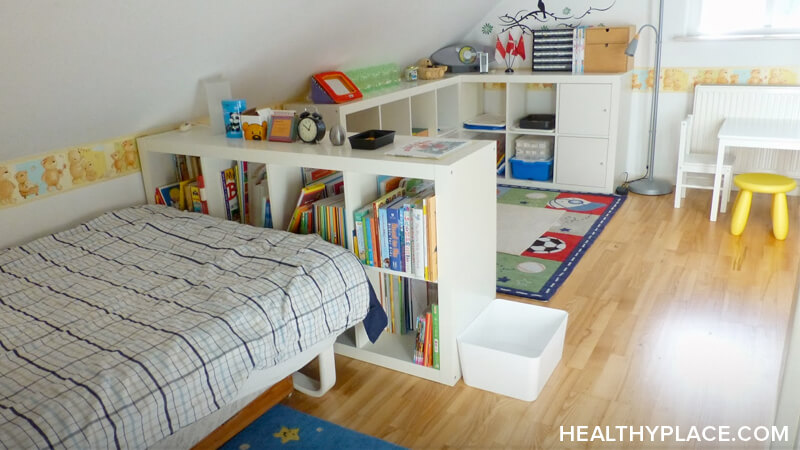30 Tips on Managing Attention Deficit Disorder (ADD) at Home

Being a parent of an ADHD child is a challenge. Here are 30 tips on managing Attention Deficit Disorder (ADHD) at home.
Based on 50 Tips on the Classroom Management of Attention Deficit Disorder by Edward M. Hallowell, MD and John J. Ratey, MD
These tips are directly from Hallowell and Ratey with only slight modifications in wording as they apply to the home situation.
According to Hallowell and Ratey:
- There is no one syndrome of ADD, but many.
- ADD rarely occurs in "pure" form by itself, but rather it usually shows up entangled with several other problems such as learning disabilities or mood problems.
- The face of ADD changes with the weather-- inconstant and unpredictable.
- The treatment for ADD, despite what may be serenely elucidated in various texts, remains a task of hard work and devotion.
There is no easy solution for the management of ADD in the home. After all is said and done, the effectiveness of any treatment for this disorder depends upon the knowledge and the persistence of the parent.
Needed: structure, education, and encouragement
1. Make sure what you are dealing with really is ADD.
Make sure someone has tested the child's hearing and vision recently, and make sure other medical problems have been ruled out. Make sure an adequate evaluation has been done. Keep questioning until you are convinced.
2. Build your support.
Make sure there is a knowledgeable person with whom you can consult when you have a problem (learning specialist, child psychiatrist, social worker, school psychologist, pediatrician -- the person's degree doesn't really matter. What matters is that he or she knows lots about ADD, has seen lots of kids with ADD, knows his or her way around a classroom, and can speak plainly.) Make sure the teachers are working with you.
3. Know your limits.
Don't be afraid to ask for help. You should feel comfortable in asking for help when you feel you need it.
4. Remember that ADD kids need structure.
They need their environment to structure externally what they can't structure internally on their own. Make lists. Children with ADD benefit greatly from having a table or list to refer to when they get lost in what they're doing. They need reminders. They need previews. They need repetition. They need direction. They need limits. They need structure.
5. Post rules.
Have them written down and in full view. The children will be reassured by knowing what is expected of them.
6. Repeat directions.
Write down directions. Speak directions. Repeat directions. People with ADD need to hear things more than once.
7. Make frequent eye contact.
You can "bring back" an ADD child with eye contact. Do it often. A glance can retrieve a child from a daydream or just give silent reassurance.
8. Set limits, boundaries.
This is containing and soothing, not punitive. Do it consistently, predictably, promptly, and plainly. DON'T get into complicated, lawyer-like discussions of fairness. These long discussions are just a diversion. Take charge.
9. Have as predictable a schedule as possible.
Post it on the refrigerator, the child's door, bathroom mirror. Refer to it often. If you are going to vary it, give lots of warning and preparation. Transitions and unannounced changes are very difficult for these children. They become discombobulated. Help the kids make their own schedules for after school in an effort to avoid one of the hallmarks of ADD: procrastination.
10. Take special care to prepare for transitions well in advance.
Announce what is going to happen, then make repeat announcements as the time approaches.
11. Allow for escape valve outlets.
Finding the right outlet will allow the child to leave the room rather than "lose it," and in so doing begin to learn important tools of self-observation and self- modulation.
12. Provide frequent feedback.
It helps keep them on track, lets them know what is expected of them and if they are meeting their goals, and can be very encouraging. Notice the positive steps no matter how small and tell the child what you see.
13. Break down large tasks into small tasks.
This is one of the most crucial of all training techniques for children with ADD. Large tasks quickly overwhelm the child and he recoils with an emotional "I'll-NEVER-be-able- to-do-THAT" kind of response.
By breaking the task down into manageable parts, each component looking small enough to be do-able, the child can sidestep the emotion of being overwhelmed. In general, these kids can do a lot more than they think they can. By breaking tasks down, the child can prove this to himself or herself.
With small children, this can be extremely helpful in avoiding tantrums born of anticipatory frustration. And with older children, it can help them avoid the defeatist attitude that so often gets in their way. And it helps in many other ways, too. You should do it all the time.
14. Loosen up. Act silly.
Let yourself be playful, have fun, be unconventional, be flamboyant. Introduce novelty into the day. People with ADD love novelty. They respond to it with enthusiasm. It helps keep attention -- the kids' attention and yours as well. These children are full of life -- they love to play. And above all they hate being bored. So much of their "treatment" involves boring stuff like structure, schedules, lists, and rules, you want to show them that those things do not have to go hand in hand with being a boring person. Every once in a while, if you can let yourself be a little bit silly, that will help a lot.
15. But watch out for overstimulation.
Like a pot on the fire, ADD can boil over. You need to be able to reduce the heat in a hurry. The best way of dealing with chaos is to prevent it in the first place.
16. Seek out and underscore success as much as possible.
These kids live with so much failure, they need all the positive handling they can get. This point cannot be overemphasized: these children need and benefit from praise. They love encouragement. They drink it up and grow from it. And without it, they shrink and wither. Often the most devastating aspect of ADD is not the ADD itself, but the secondary damage done to self-esteem. So water these children well with encouragement and praise.
17. Use tricks to improve memory.
They often have problems with what Mel Levine calls "active working memory," the space available on your mind's table, so to speak. Any little tricks you can devise -- cues, rhymes, code and the like -- can help a great deal to enhance memory.
18. Announce what you are going to say before you say it. Say it. Then say what you have said.
Since many ADD children learn better visually than by voice, if you can write what you're going to say as well as say it, that can be most helpful. This kind of structuring glues the ideas in place.
19. Simplify instructions. Simplify choices.
The simpler the verbiage the more likely it will be comprehended. And use colorful language. Like color-coding, the colorful language keeps attention.
20. Use feedback that helps the child become self-observant.
Children with ADD tend to be poor self-observers. They often have no idea how they come across or how they have been behaving. Try to give them this information in a constructive way. Ask questions like, "Do you know what just happened?" or "How do you think you might have said that differently?" or "Why do you think that other girl looked sad when you said what you said?" Ask questions that promote self-observation.
21. Make expectations explicit.
Don't assume anything or leave anything to chance.
22. Children with ADD respond to rewards and incentives.
A point system is a possibility as part of behavior modification or a reward system for younger children. Many are little entrepreneurs.
23. Try discreetly to offer specific and explicit advice as a sort of social coaching.
Many children with ADD are viewed as indifferent or selfish when in fact they just haven't learned how to interact. This skill does not come naturally to children, but it can be taught or coached.
If the child has trouble reading social cues -- body language, tone of voice, timing, and the like -- For example, say, "Before you tell your story, ask to hear the other person's first."
24. Make a game out of things when possible.
Motivation improves ADD.
25. Give responsibility back to the child when possible.
Let kids devise their own method for remembering what needs to be done, or let them ask you for help rather than your telling them they need it.
26. Praise, stroke, approve, encourage, nourish.
Praise, stroke, approve, encourage, nourish. Praise, stroke, approve, encourage, nourish.
27. Be like the conductor of a symphony. Get the orchestra's attention before beginning.
You may use silence, or the equivalent of tapping your baton, to do this. Keep the child "in time," pointing to things that need to be done as you ask for their help.
28. Expect to repeat, repeat, repeat.
Do it without getting angry. Anger won't increase their memory.
29. Provide for exercise.
One of the best treatments for ADD, in both children and adults, is exercise, preferably vigorous exercise. Exercise helps work off excess energy, it helps focus attention, it stimulates certain hormones and neurochemicals that are beneficial, and it is fun. Make sure the exercise IS fun, so the child will continue to do it for the rest of his or her life.
30. Always be on the lookout for sparkling moments.
These kids are far more talented and gifted than they often seem. They are full of creativity, play, spontaneity and good cheer. They usually have a "special something" that enhances whatever setting they're in.
About the author: Elaine Gibson is a writer, has a degree in educational psychology (M.A.), and counseling experience. She is also the mother of a "difficult child."
APA Reference
Staff, H.
(2021, December 20). 30 Tips on Managing Attention Deficit Disorder (ADD) at Home, HealthyPlace. Retrieved
on 2025, April 17 from https://www.healthyplace.com/adhd/children-behavioral-issues/30-tips-on-managing-attention-deficit-disorder-add-at-home



